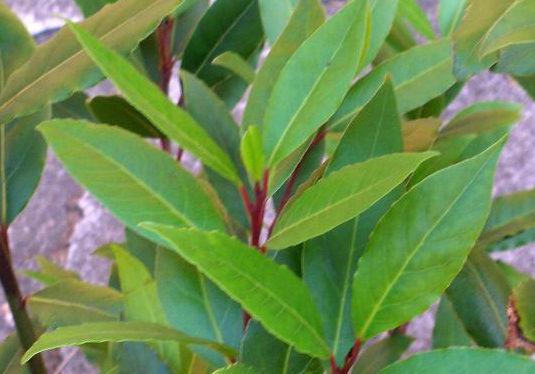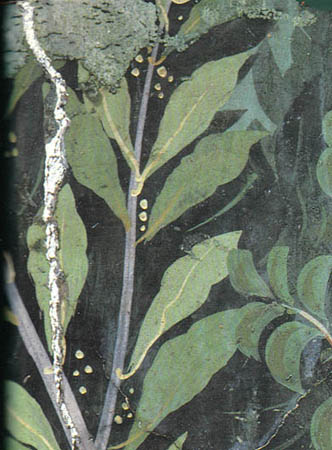
Also known as bay laural, this aromatic evergreen shrub or small tree is native to the Mediterranean region and a member of the laurel family, Lauraceae, that also includes sassafras, avocado, and cinnamon. We know from archaeological evidence that sweet bay grew in ancient Pompei on the day of the volcanic eruption in 79 AD. A carbonized branch of a shrub was found near the lararium in the House of the Faun and a preserved trunk, leaves and berries were found near the Porta Stabiana. Sweet bay is among the most common shrubs shown in the wall paintings of ancient Pompeii houses and was valued for its evergreen and fragrant foliage that was used for making perfume, garlands, wreaths, chaplets and victory crowns offered to military heroes and winners of sports or poetic competitions. The ancient Roman naturalist, Pliny the Elder (d 79 AD) tells us in his Natural History that bay was used medicinally to treat a variety of ailments from ear aches and intestinal pain to pimples. While modern science suggests that sweet bay may have some medicinal benefits, treating pimples and ear aches are not among them. Photo Credit Wikipedia

Description: Plants grow up to 60′ in the wild but 5′ in a pot and have glossy, thick, leathery, dark green leaves that are 2-4″ long and elliptical to oval. In the spring, clusters of small greenish yellow male and female flowers appear in the leaf axils of different plants. The flowers lack petals and are followed by dark purple/ black, grape-sized, one-seeded berries on female plants. Photo Credit: Wikipedia
Size: 5’ (in pot)-60’ H x3-10′ W.
Light: Sun to partial shade.
Soil: Moderately rich, well-drained; pH 6.2.
Hardiness: Zones 7-10.